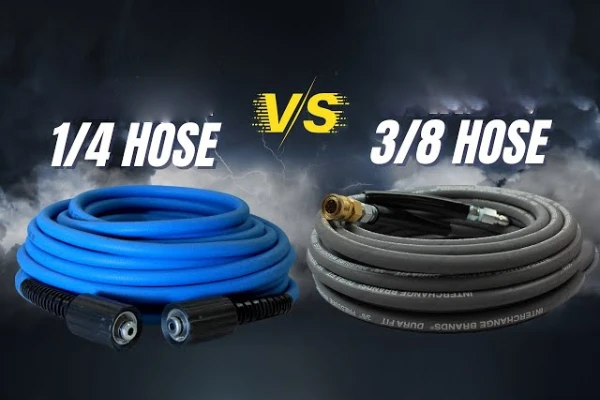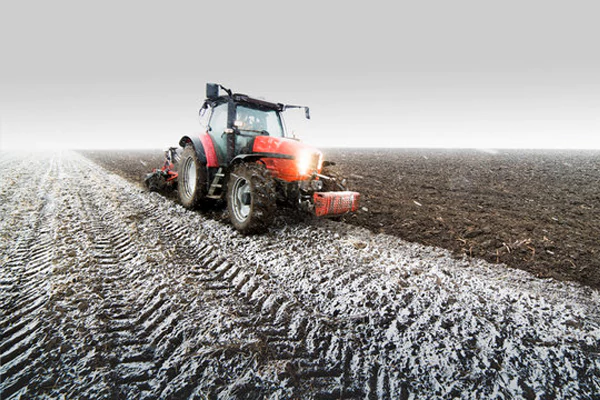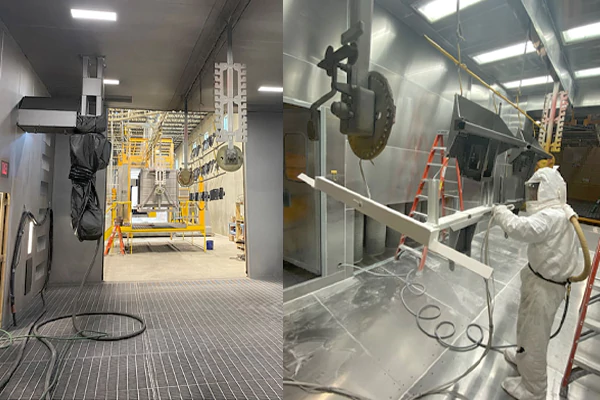Hydraulic hoses are essential components in machinery and industrial equipment, responsible for transmitting fluid power safely and efficiently. However, improper handling, tight bends, or unsuitable routing can lead to kinked hoses, which restrict fluid flow, reduce performance, and may cause costly equipment damage. Understanding how to prevent kinks is crucial for maintaining system reliability and longevity.
In this blog, we explore practical tips and best practices to avoid kinked hydraulic hoses. From proper hose selection and routing techniques to protective measures and routine inspections, these strategies help ensure smooth operation, reduce downtime, and extend the service life of your hydraulic systems.
What are Kinked Hydraulic Hoses?
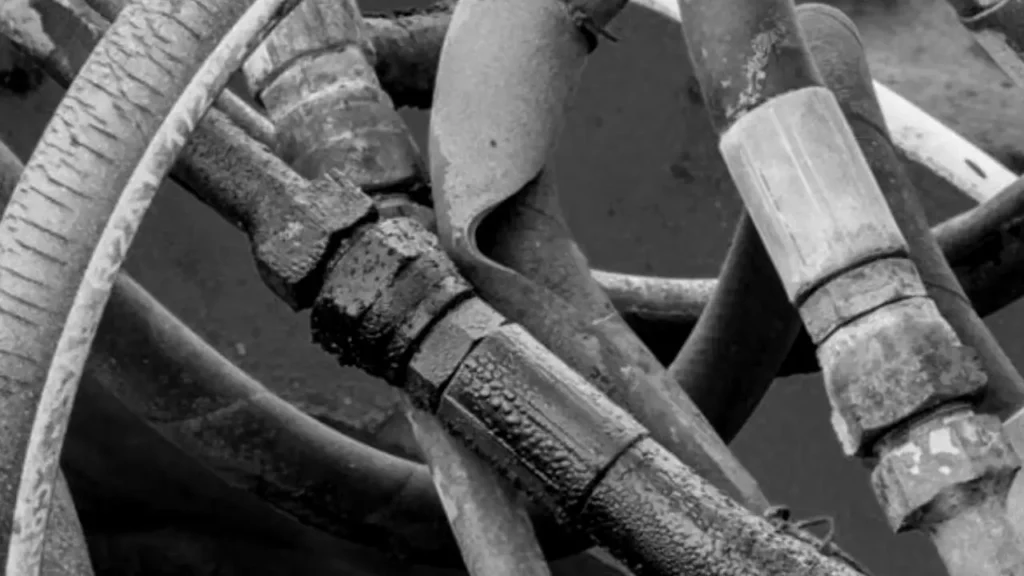
Kinked hydraulic hoses occur when a hose bends sharply beyond its minimum bend radius, causing a permanent deformation or collapse in the hose structure. This restricts fluid flow, increases pressure stress, and can lead to leaks or complete hose failure. Kinks reduce system efficiency and may damage connected components.
Is Kinked Hydraulic Hose Safe to Use?
Using a kinked hydraulic hose is unsafe and can lead to serious equipment damage or personal injury. Kinks weaken the hose structure, reduce fluid flow, and increase pressure stress, making them prone to leaks, bursts, and operational failures in hydraulic systems.
- Reduced Flow Efficiency: A kink restricts fluid movement, causing uneven pressure distribution and reduced performance. Over time, this can strain pumps and valves, leading to faster wear, higher energy consumption, and potential system failure, increasing maintenance costs and operational downtime.
- Risk of Hose Failure: Kinks create weak points in the hose wall, making it more likely to rupture under pressure. A sudden failure can result in hydraulic fluid spraying at high pressure, posing safety hazards to personnel and damaging nearby equipment.
- System Damage: Continued use of kinked hoses can stress connected components, such as fittings and pumps, causing premature wear. This can lead to costly repairs, unexpected downtime, and reduced overall efficiency, impacting productivity in industrial and mobile applications.
- Safety Hazards: Hydraulic fluid leaks from kinks can create slippery surfaces, fire hazards, or chemical exposure. Ensuring hoses are kink-free is essential to protect operators and maintain compliance with workplace safety standards.
Why Is Hydraulic Hose Kinked?
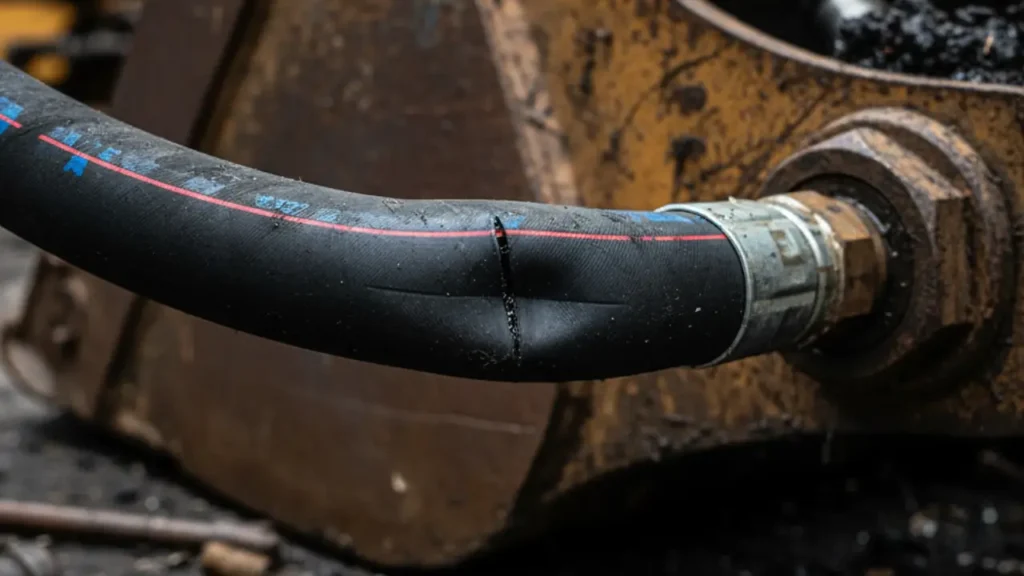
Hydraulic hoses can kink due to improper handling, incorrect installation, or exceeding their bend radius. Kinks compromise hose performance, reduce fluid flow, and increase pressure stress. Understanding the common causes helps prevent damage and ensures safer, more efficient hydraulic system operation.
- Exceeding Minimum Bend Radius: Bending a hose beyond its specified radius causes permanent deformation. This restricts fluid flow, weakens the hose wall, and increases stress on fittings, potentially leading to leaks or sudden hose failure, reducing overall system efficiency.
- Improper Installation: Twisting, sharp bends, or routing hoses through tight spaces can create kinks. Correct installation with proper supports and alignment ensures smooth fluid flow, protects the hose from damage, and extends its service life.
- Physical Damage or Handling Errors: Dropping hoses, dragging them across rough surfaces, or improper storage can create weak spots. These areas are prone to kinking under pressure, leading to operational hazards and increased maintenance costs.
- Excessive Pressure or Flow Surges: Hydraulic systems experiencing sudden pressure spikes can deform hoses, especially if they are already bent or stressed. Consistent pressure monitoring and using hoses rated for specific pressures help prevent kinks and failures.
- Temperature Extremes: High or low temperatures can affect hose flexibility. Stiff hoses in cold environments are more likely to kink, while overheated hoses may soften and deform under pressure, reducing reliability and increasing maintenance requirements.
How to Prevent Hydraulic Hose Kinking?
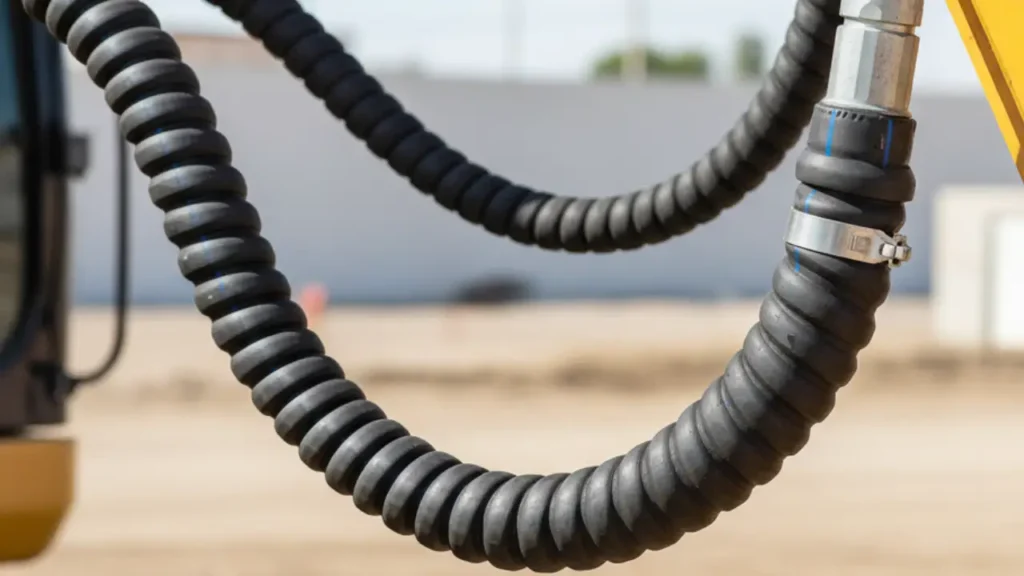
Preventing hydraulic hose kinks is essential for maintaining system efficiency, safety, and longevity. Proper handling, correct installation, and regular maintenance reduce the risk of hose deformation. Following simple preventive measures ensures smooth fluid flow, protects equipment, and minimizes costly downtime.
- Maintain Proper Bend Radius: Always follow the hose manufacturer’s recommended minimum bend radius. Avoid sharp bends or twisting during installation, as exceeding the bend radius creates weak points that can restrict flow, cause leaks, or lead to premature hose failure.
- Correct Hose Routing: Plan hose paths carefully to prevent unnecessary bends or contact with sharp edges. Using clamps, supports, and protective sleeves ensures hoses stay in place, reducing stress and minimizing the risk of kinking during operation.
- Regular Inspection and Maintenance: Frequently check hoses for signs of wear, abrasion, or deformation. Early detection of weak spots allows for timely replacement, preventing kinks from developing and avoiding unexpected system downtime or safety hazards.
- Avoid Twisting During Installation: Do not twist hoses while connecting fittings or maneuvering into position. Twisting compromises hose integrity, increases stress on the walls, and can lead to kinks, leaks, or catastrophic failures under high-pressure conditions.
- Temperature and Pressure Considerations: Use hoses rated for your system’s operating pressure and temperature. Extreme conditions can stiffen or soften hoses, increasing the likelihood of kinking. Selecting the correct hose material ensures reliable performance and longer service life.
Conclusoin
Avoiding kinked hydraulic hoses requires awareness and proactive management. By ensuring proper storage, careful handling, and respecting recommended bend radii, you can significantly extend hose life and maintain system efficiency. These measures protect your investment and prevent costly repairs or downtime in hydraulic systems.
Regular inspections and timely replacement of worn or damaged hoses further reduce the risk of kinks. Using high-quality hoses and selecting the correct type for specific applications ensures that hydraulic systems operate smoothly and safely. Proper maintenance routines are essential for long-term performance and reliability.
For businesses seeking reliable hydraulic solutions, get wholesale hydraulic hoses from Kingdaflex. Our range of durable hoses meets diverse industrial requirements, offering consistent quality and performance. Partnering with Kingdaflex helps you maintain efficient operations, reduce downtime, and ensure safe, long-lasting hydraulic system performance.


